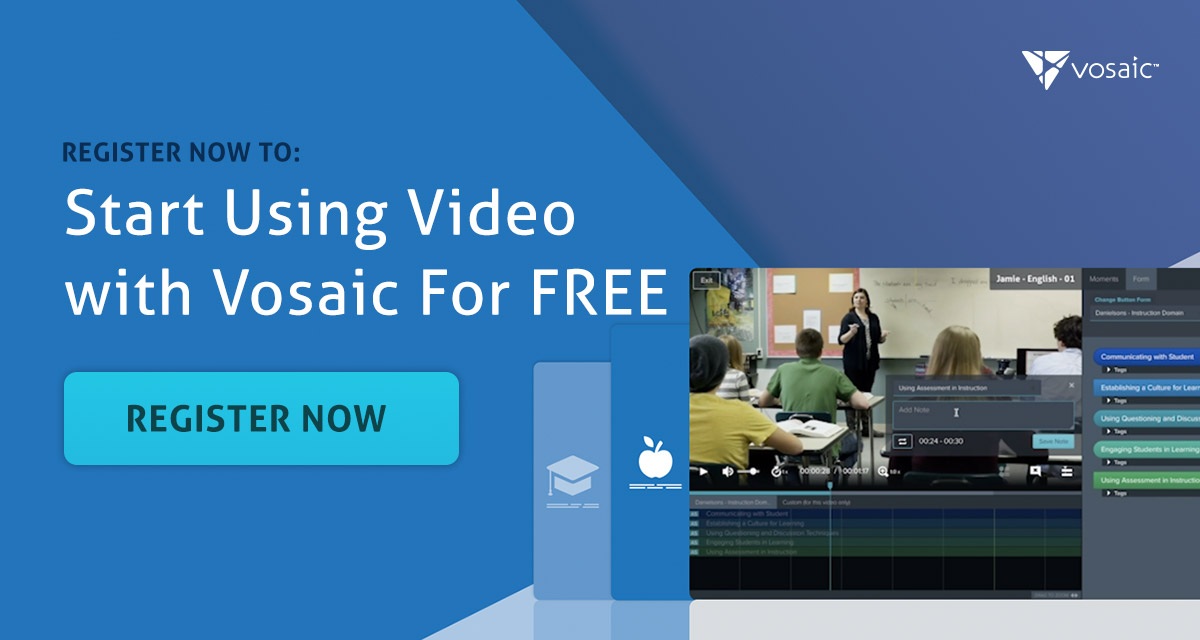Math is one of the most challenging subjects to teach. Why? It involves constantly course-correcting students as they journey down mathematical pathways. Teachers must continuously remain steps ahead of students throughout this journey.
Professors and their pre-service teachers more than deserve the opportunity to develop skills in the venture of teaching mathematics. Furthermore, their development should incorporate research-backed methods that increase confidence in the surety of improvement while avoiding wasted time and resources.
While there are many methods of creating improvement and progress in teaching practices, the MQI (Mathematical Quality of Instruction) Framework fits the researched-backed bill. Don’t be fooled by the name; many insights that MQI provides can and should be applied to subject matter across the curriculum.
Stay on Top of Important Discoveries
We read case studies and academic journals so you don’t have to. Sign up and we’ll send you the key takeaways.
The MQI Framework
The MQI Framework is an observational rubric containing four instruction domains for teachers to score with “points.” The rubric provides a framework that guides teachers in analyzing their math instruction specifically. Four “domains” contained in the practice of learning and teaching math have been identified by Harvard University researchers to focus the MQI Framework on practices that, when applied, derive the most improvement.
Domains
The following information is taken directly from the MQI Rubric from Harvard University.
Common Core-Aligned Student Practices
To what extent are the students, as opposed to the teacher, doing the mathematics of the lesson - engaging in mathematical thinking and reasoning, communicating about mathematics, and solving high-cognitive demand tasks and contextualized problems?
Working with Students and Mathematics
To what extent does the teacher use student mathematical ideas or misconceptions to move the lesson forward?
Richness of the Mathematics
To what extent are teachers and students making sense of the mathematics of the lesson? Are there elements of “why” and not just how? Do the teacher and students attend to precision in their use of mathematical language?
Errors and Imprecision
Is the mathematics of the lesson clear and correct?
The possibilities of applying these domains to other areas of instruction are endless. For example, a student-teacher could evaluate, using video reflection tools, the extent to which students participate in thinking, reasoning, or communicating about grammar or the contents of a history lesson, what elements of “why” are contained in a lesson as compared to “how,” and whether a lesson of any subject matter provides clear and correct information.
The Coaching Cycle
In addition to the four domains of instruction, there are five steps in the coaching cycle, leading the teacher through rounds of teaching, discovery, and improvement. Within this cycle, a teacher works with a coach (or a pre-service teacher works with a professor) to optimally incorporate the four domains into a practice of self-reflection and action.
Step 1
Teachers record their instruction and share it with a coach.
Step 2
The coach reviews the teacher’s video and selects two brief clips for further analysis, along with a stock video from the MQI Video Library.
Pro Tip: Collecting Clips
Gathering video clips can be a laborious task for coaches and professors if your software isn’t built for it. Most platforms only allow you to tag specific moments in a video, with no permitted specificity as to the length of the moment you aim to capture and share with teachers or student teachers.
Using Vosaic’s video software can correct this commonly occurring issue with the most efficiency and clarity.
What makes this capability indispensable? Capturing an entire moment from start to finish, instead of a marker in time or “freeze-frame,” allows everyone working with the video to know exactly what is being honed in on.
Furthermore, Vosaic makes it simple to attach comments directly to an identified clip. This makes the steps in the MQI framework simpler to progress through.
If you don't have a Vosaic account for video-based feedback and student self-reflection, you can start with a free trial today.
Step 3
The teacher reviews all three clips using the MQI framework as a guide.
Step 4
A coaching conversation aids in examining specific progress, goals, and plans of action for future improvement.
Step 5
The teacher executes the action items previously discussed in the
MQI’s Credibility
The claim that MQI is researched-based is grounded in a Harvard University study. In the study, seventy-two randomly selected teachers using MQI methods were compared to seventy teachers assigned to a control group.
Many of the MQIs improvement factors proved to be statistically significant between the two groups. Firstly, “Teachers who received MQI Coaching tended to find their professional development significantly more useful than control teachers.” For undergraduates, this implies a higher level of engagement and therefore knowledge retention. Furthermore, “MQI Coaching teachers thought that their math instruction improved significantly more than control teachers.”
Another finding, according to classroom video and student surveys, was that overall mathematics instruction improved in classrooms where teachers integrated MQI practices. Beyond these findings, three of the instruction domains were found to improve at a statistically significant level. These domains included “Richness of the Mathematics,” “Working with Students and Mathematics,” and “Common Core-Aligned Student Practices.”
The Importance of Video for MQI
These important domains of instruction are observed using video recordings for many reasons. First and foremost, professors can certainly not be in every classroom of their student-teachers, attempting to provide adequate observational details with pen and paper. Beyond that, video makes it possible for teachers to look unbiasedly and intently at the actual version of their own instruction and how it’s affecting students instead of the version they’ve stored in their memories.
We all have a two-system brain, in which system one works automatically, creating biased judgments that help us survive. One of the places quick, unconscious, biased judgments are not welcome? Teacher coaching. Video allows us to slow down this “automatic brain,” making us more intentional about what we observe.
Consistent findings show that video analysis of teaching creates a sense of cognitive dissonance in teachers; what they see in the video often conflicts with their thoughts about their teaching while in the midst of it. This cognitive dissonance is what pushes growth, as teachers must, at least slightly, alter what they previously believed about their instruction.
Overall, the MQI Framework is an exciting tool that is beginning to be used at schools and universities worldwide. Implementing its suggested Coaching Cycle could be the best bet for teacher improvement and growth.
About Vosaic
Vosaic is the new standard for video-powered feedback. Help students bridge the gap between theory and practice. Observe, coach, mentor, and grade students using Vosaic’s online video coaching platform




